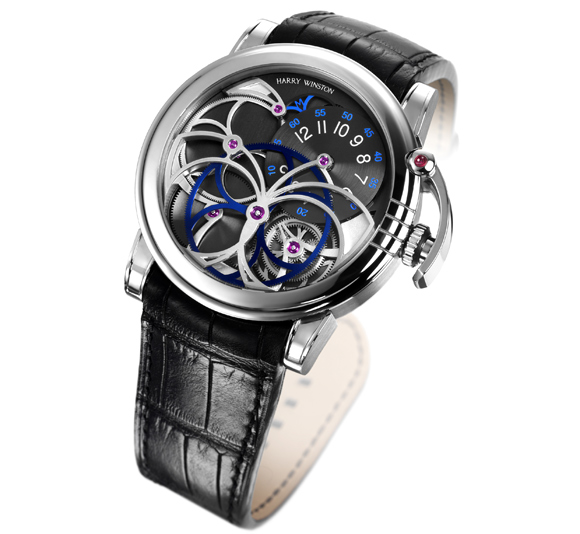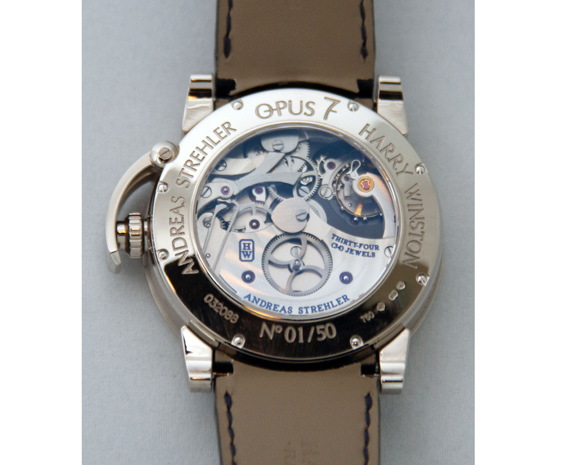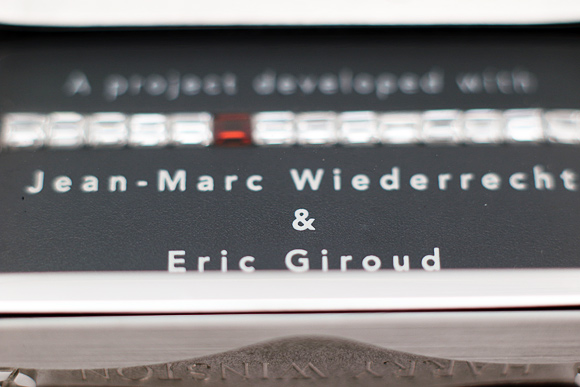The collaboration between Harry Winston and Andreas Strehler led to a genuinely architectural model in the Opus series. The focus of attention is the huge butterfly-shaped bridge that arches over the movement. Aside from its aesthetic effect, this large wheel is the result of Andreas Strehler removing the second wheel in order to reduce friction in the movement. The two remaining wheels, though larger, turn more slowly and therefore generate less friction.

With this construction dominating the lower half of the watch, Andreas Strehler devised an ingenious means to display the hours, minutes and power reserve on the same disc at 2 o’clock. The disc only rotates on demand when the pusher integrated into the crown is pressed. One push turns the disc to display the hours (white Arabic numerals), a second push displays the minutes (blue Arabic numerals) and a third push shows the power reserve, which by no mere coincidence is 60 hours, meaning that the minute scale can also be used to display the power reserve.

The understated case design is intended to further highlight the beauty of the movement. It is inspired by the Harry Winston Ocean model but with more direct lines and tauter edges than the traditional Ocean case and with the noticeable difference of integrated lugs and an articulated lever to operate the crown.
Opus 9, produced in collaboration with designer Eric Giroud and movement constructor Jean-Marc Wiederrecht, marked a radical departure in the Opus series. The large case is almost a square shape, has no hands and no visible movement components. Yet the piece still manages to capture the essence of the Harry Winston as good as (if not even better than) its predecessors, since it uses an arrangement of precious stones to display the hours and minutes in a linear fashion. The stones in question are baguette-cut diamonds typical of Harry Winston that have been set into brass chains (with an individual mandarin garnet to indicate the hours and minutes) in a way that recalls the invisible settings in Harry Winston jewellery.

Setting the stones on such chains is a challenge in itself. Driving the chains along their respective scales is an altogether different feat. First of all, a powerful movement is required to move the weight of the chains and diamonds; secondly, the rotary movement from the self-winding calibre has to be converted into a linear movement for the time display. This is done by a rack and pinion system. Finally, the whole ensemble must be firmly secured in a frame that nevertheless offers an all-around view of the chains both front and back. With the internal workings completely hidden for the first time in the Opus series and the diamonds for which Harry Winston is famous taking a functional role in the time display, Eric Giroud and Jean-Marc Wiederrecht captured the very essence of what a Harry Winston Opus piece should be.

Visit the new Harry Winston Opus website for more information on the complete Harry Winston Opus Series and the build-up to the Opus 14 launch





